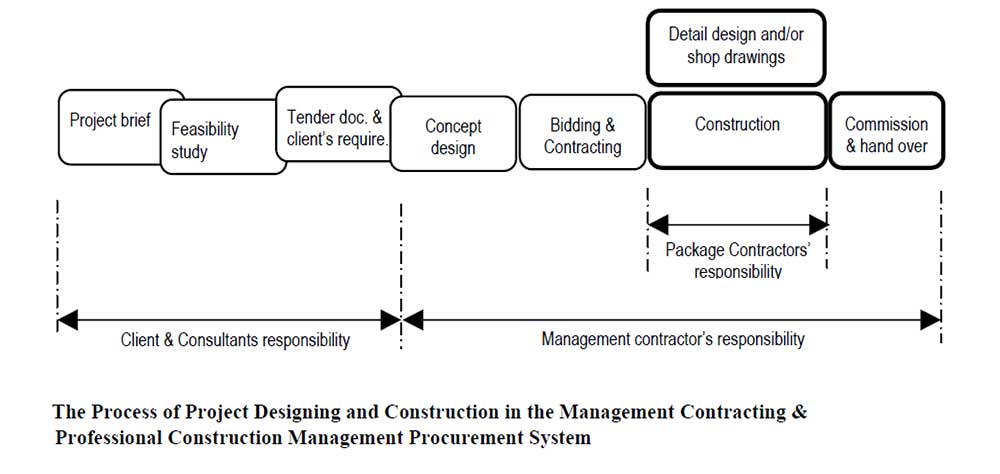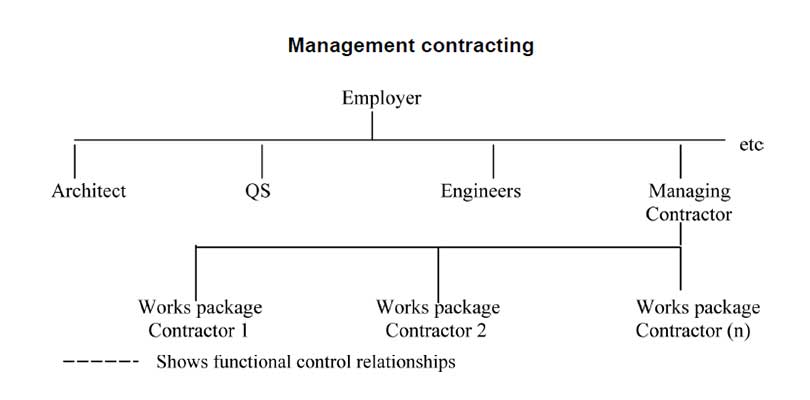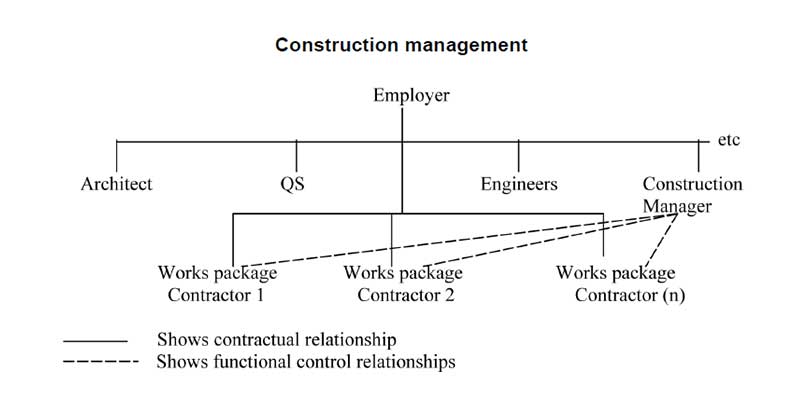Introduction
Are you a project manager or construction professional looking for the most effective procurement path for your next construction project? With numerous methods available, it can be perplexing to choose the right one that aligns with your project goals, budget, and timeline. In this article, we will dive into two popular procurement paths: the Management Contracting Procurement Path and the Construction Management Procurement Path. By exploring their key aspects, benefits, drawbacks, and unique characteristics, you’ll gain valuable insights to help you make an informed decision.

The Management Contracting Procurement Path
Imagine a symphony orchestra where each musician brings their unique talent, playing their own part to create a harmonious masterpiece. The Management Contracting Procurement Path operates in a similar way, bringing together specialized contractors under the guidance of a management contractor, acting as the conductor of the construction project.

Key Aspects of Management Contracting
- 100% Subcontracting: In this procurement method, the management contractor is appointed on a fee basis to coordinate the works and provide common facilities. The package contractors are responsible for executing their respective scopes, while the management contractor oversees the entire construction process.
- Enhanced Coordination: With a dedicated management contractor at the helm, this procurement path ensures improved coordination among the various package contractors. By centralizing communication and fostering collaboration, potential conflicts and delays can be minimized.
- Specialized Expertise: Each package contractor brings their specific expertise to the project, enabling high-quality workmanship in their respective areas. The management contractor’s role is to identify and engage these specialists, ensuring that the right talents are allocated to the appropriate tasks.
- Shared Risks: Since the management contractor is responsible for coordinating the works, they share the risks associated with the project. This mitigates the burden on the client and promotes a collaborative approach, where all parties work towards achieving project success.
Benefits and Drawbacks of Management Contracting
Benefits
- Improved Coordination: The centralized management provided by the management contractor leads to enhanced coordination and smoother project execution.
- Specialized Expertise: By engaging package contractors with specific expertise, the project can benefit from the best talent in each field, resulting in higher-quality outcomes.
- Shared Risks: The shared risks between the client and the management contractor can foster a sense of teamwork and collaboration, ultimately reducing the client’s exposure to potential issues.
Drawbacks
- Cost Uncertainty: Due to the incomplete finalization of the design before commencing work and dealing with multiple packages, the client may face cost uncertainty. This lack of clarity can make it challenging to determine the total financial commitment at an early stage.
- Potential Conflicts: With multiple package contractors involved, conflicts may arise regarding scheduling, coordination, and responsibilities. Proper management and communication are essential to mitigate these potential conflicts and ensure project success.
The Construction Management Procurement Path
Now, let’s turn our attention to the Construction Management Procurement Path. In this method, the client (Employer) signs direct contract agreements with various package contractors, giving them greater control over the project’s execution. It’s akin to a director guiding a movie production, working directly with each department to bring the vision to life.

Key Aspects of Construction Management
- Direct Contractual Relationships: Unlike the Management Contracting Procurement Path, where the client forms a contractual relationship with the management contractor, in Construction Management, the client directly engages with multiple package contractors. This grants the client more control and direct oversight of the project.
- Greater Control and Flexibility: With direct relationships established, the client can exercise greater control over the project’s direction. They have the ability to make adjustments and modifications as needed, offering increased flexibility during the construction process.
- Comprehensive Project Oversight: In the Construction Management approach, the client takes on a more hands-on role, overseeing multiple package contractors. This level of involvement requires active project management and effective communication to ensure all contractors are aligned with the project goals.
Advantages and Challenges of Construction Management
Advantages
- Direct Control: By establishing direct contractual relationships with package contractors, the client has greater control over the project’s execution, allowing for efficient decision-making and prompt adjustments.
- Flexibility: With direct oversight, the client can adapt to changing circumstances or requirements during the construction process, enabling timely modifications without the need for extensive contract renegotiations.
Challenges
- Increased Administrative Burden: Since the client has direct contractual relationships with multiple package contractors, additional administrative tasks arise. This includes managing various contracts, resolving disputes, and coordinating the efforts of each contractor.
- Coordination Complexity: With the client actively overseeing multiple package contractors, effective coordination becomes paramount. It requires strong project management skills and efficient communication to ensure all contractors work cohesively towards achieving project objectives.
Real-World Examples and Case Studies
To further illustrate the practical applications and outcomes of these procurement paths, let’s explore two real-world examples.
Example 1: Management Contracting
In a large-scale infrastructure project, a client adopts the Management Contracting Procurement Path. The management contractor is responsible for coordinating the construction works and engaging package contractors specialized in areas such as civil works, mechanical systems, and electrical installations. By centralizing communication and utilizing their expertise, the management contractor ensures seamless integration of various scopes, resulting in a timely and successful project completion.
Let’s take a peek into the real world and explore how these procurement paths have been successfully implemented. In the iconic construction of the Burj Khalifa, the tallest building in the world, the Management Contracting Procurement Path was chosen. The client, Emaar Properties, appointed Turner Construction International as the management contractor, overseeing the coordination of multiple package contractors. This approach allowed for specialized expertise in each discipline, resulting in the awe-inspiring masterpiece that stands tall in Dubai’s skyline.

Example 2: Construction Management
For a complex commercial development, the client opts for the Construction Management Procurement Path. They directly engage with package contractors responsible for different aspects, including architecture, structural engineering, and interior fit-outs. This approach allows the client to closely monitor the progress of each package, make design adjustments when necessary, and maintain a high level of quality control throughout the construction process.
The Sydney Opera House, a globally renowned architectural marvel, followed the Construction Management Procurement Path. The client, the New South Wales Government, directly contracted with various package contractors, leading the charge towards this iconic structure. This method provided them with greater control and flexibility throughout the project, ensuring that the vision of architect Jørn Utzon was brought to life.

Conclusion
When it comes to choosing the right procurement path for your construction project, understanding the nuances, benefits, and drawbacks of each approach is crucial. The Management Contracting Procurement Path offers improved coordination, specialized expertise, and shared risks, although it may introduce cost uncertainty and potential conflicts. On the other hand, the Construction Management Procurement Path provides direct control, greater flexibility, and comprehensive project oversight, yet entails an increased administrative burden and coordination complexity.
Consider the unique requirements of your project, the level of control you desire, and the resources at your disposal to make an informed decision. Remember, successful project delivery relies not only on the procurement method chosen but also on effective project management, open communication, and a collaborative mindset.
Frequently Asked Questions (FAQs)
- Is the Management Contracting Procurement Path suitable for small-scale projects?
- While the Management Contracting approach can be applied to projects of various sizes, it is often more prevalent in larger and more complex endeavors. Small-scale projects might benefit from alternative procurement methods that align better with their scale and budget.
- Can the Construction Management Procurement Path be used in public sector projects?
- Yes, the Construction Management approach can be utilized in public sector projects. However, it is essential to ensure compliance with relevant procurement regulations and guidelines specific to the public sector.
- Which procurement path offers greater cost certainty?
- While the Construction Management approach provides the client with more direct control, the Management Contracting Procurement Path may offer greater cost certainty, as the management contractor assumes a more active role in managing and coordinating the project.
- Are these procurement paths limited to specific construction sectors?
- No, both procurement paths can be applied to various construction sectors, including residential, commercial, and infrastructure. The suitability of each path depends on the project’s unique requirements and the client’s preferences.
- How do these procurement paths impact the timeline of a construction project?
- Both paths can impact project timelines differently. The Management Contracting approach, with its centralized coordination, may help streamline the construction process and potentially shorten timelines. Meanwhile, the Construction Management approach offers flexibility, but the direct involvement of the client in coordinating multiple contractors may require additional time for decision-making and coordination.
Remember, selecting the right procurement path is crucial to the success of your construction project. Carefully consider the project’s goals, requirements, and resources before making a decision, and always seek professional advice to ensure the chosen approach aligns with your project’s specific needs.






